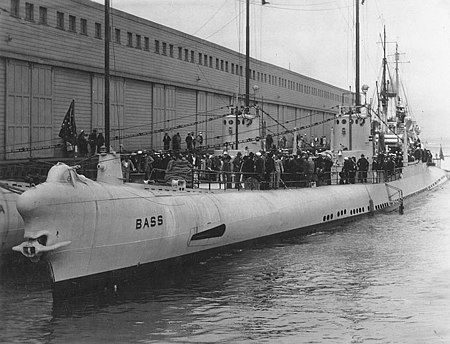USS Bass (SS-164)
1924 shipsMaritime incidents in March 1945Ships built in Kittery, MaineShips sunk as targetsShipwrecks of the New Jersey coast ... and 3 more
United States Barracuda-class submarines (1919)V-boatsWorld War II submarines of the United States

USS Bass (SF-5/SS-164), a Barracuda-class submarine and one of the "V-boats", was the first ship of the United States Navy to be named for the bass.
Excerpt from the Wikipedia article USS Bass (SS-164) (License: CC BY-SA 3.0, Authors, Images).USS Bass (SS-164)
Tautog Avenue,
Geographical coordinates (GPS) Address Phone number Website Nearby Places Show on map
Geographical coordinates (GPS)
| Latitude | Longitude |
|---|---|
| N 41.398116 ° | E -72.08696 ° |
Address
Naval Branch Health Clinic
Tautog Avenue 1
06349
Connecticut, United States
Open on Google Maps










